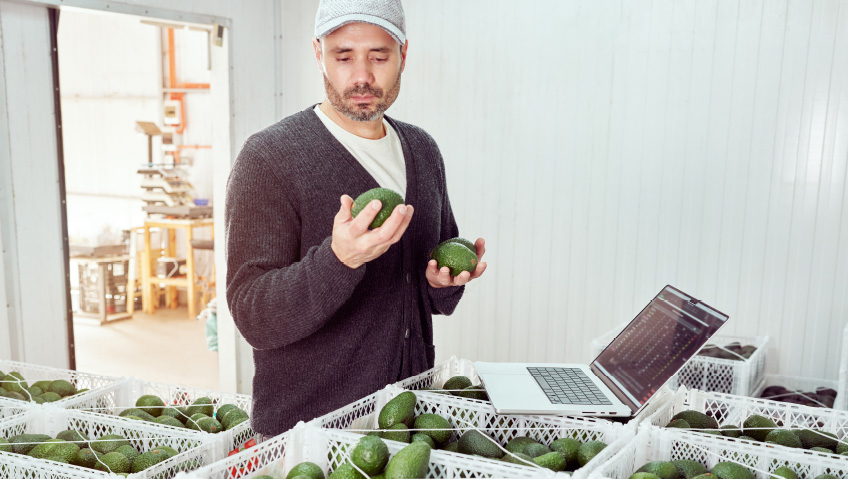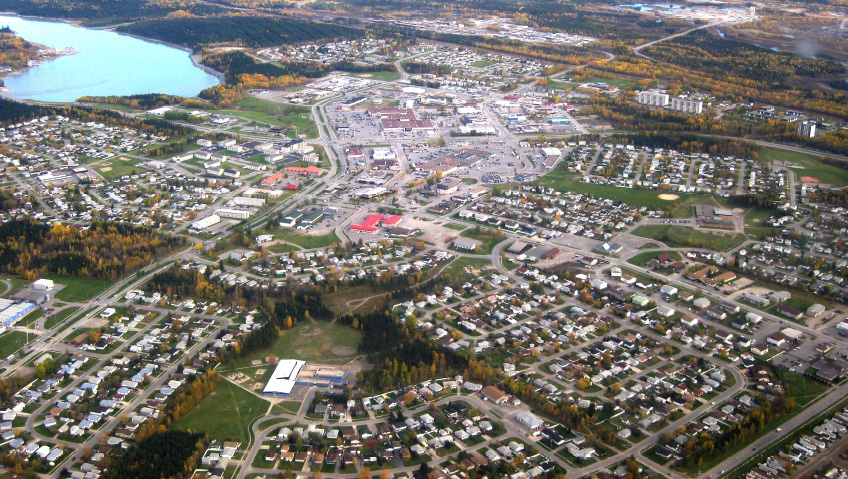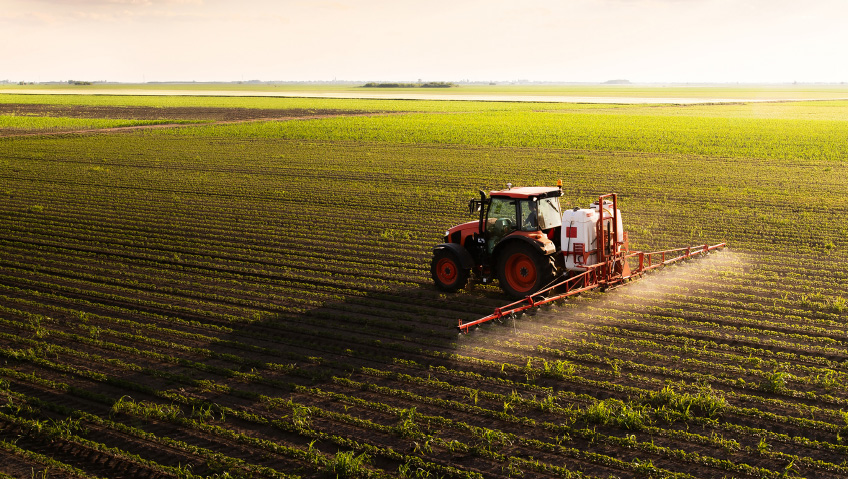Many people take for granted the fact that, for local stores to be safely stocked with perishable food items like fresh produce, dairy, meats, and frozen goods, and for pharmacies and hospitals to be equipped with life-saving vaccines and medications, it takes an expansive network of cold storage infrastructure and logistics.
These systems are critical to the health and wellbeing of communities around the world, and the more robust global food systems become, the more expansive the cold storage systems must be to ensure food safety and availability that satisfies demand. And, locally, this has become a challenge.
According to the National Agricultural Statistics Service (NASS), as of October 2023 there were 900 refrigerated facilities across the U.S., a number that is slowly dwindling despite the addition of millions of square feet of new space each year and growing demand for cold storage. More importantly, this represents only a fraction of the global cold storage demand, a market that Research and Markets has valued at more than $190 billion in 2024 and is expected to reach more than $400 billion by 2033 as demand continues to grow for this critical infrastructure.
Highly specialized infrastructure
Cold storage facilities are highly specialized facilities that are designed to specification, purpose-built to store commodities at controlled temperatures and climates. Designs differ and temperatures can range between -20 degrees Fahrenheit to 55 degrees Fahrenheit depending on the need. Cool facilities are often used for food items with a short shelf life like produce or non-frozen dairy products, while freezer facilities are used for foods that require sub-zero temperatures and can facilitate longer holds on the inventory. These facilities are typically located proximate to the food production facilities of origin and are designed to specification, so they could include a variety of freezing methods like blast freezing or others.
There are also hybrid facilities that are designed to handle products across the board. These larger, integrated facilities are likely to be found near major population centers and serve as a major hub for the vendors small and large who depend on them.
In most cases, cold storage facilities are not owned by those whose goods are temporarily stored within them. Most of these facilities are public refrigerated warehouses (PRW) that are operated by third-party logistics (3PL) players to supplement the demand.
In the cold storage world, third-party warehousing and logistics providers are an important part of the equation, especially as e-commerce platforms continue to grow in popularity. In addition to the space itself, they offer inventory control and management, fulfillment services, labeling, packaging, and other value-added services to ensure that products make it to their destinations.
A vulnerable system
As international food sources are increasingly used to offset the lack of domestic food supply, paired with the growth of global e-commerce networks, demand for which grew during the pandemic, the need for critical cold storage infrastructure is at an all-time high. As a result, demand continues to outpace supply.
Interruptions to supply chains during the pandemic were a good indicator of how volatile our global economy is and how insecure our global supply chains can be. This period also emphasized the need for stronger domestic supply chains to be able to withstand blips in global supply.
Pent-up demand is further increasing reliance on 3PL companies who are also driving demand for space to keep up with the needs of customers. This is true of cold storage infrastructure as well as logistics providers, which pushes up prices, with less than truckload (LTL) shipping costs inching closer to being on par with leasing the entire vehicle.
Other challenges that exist are damaged equipment, particularly refrigerator doors, which can impact the seal and thus temperature control, condensation buildup, microbial growth, and heat exposure, resulting in damaged goods, major losses, and potentially even illness. Foodborne botulism, in particular, is a paralysing illness that progresses rapidly with potentially fatal outcomes, and the best way to avoid this is proper refrigeration and proper processing. In the United States between 1994 and 2021, there were 37 identified cases, four of which resulted in death. 13 of these cases were the result of inadequate commercial refrigeration while others were caused by actions inside the home, which demonstrates the value and importance of adequate refrigeration infrastructure and storage.
A costly endeavor
While the market has cooled post-pandemic, mostly in terms of construction starts slowing due in part to factors beyond the market’s control, the volume of these facilities must continue to grow to try to sustain growth in demand. As it stands, only two percent of industrial stock in the United States is cold storage. To make matters worse, a significant percentage of the limited cold storage infrastructure in the United States is outdated, with aging or obsolete infrastructure and equipment, inadequate insulation, and ineffective refrigeration systems, all of which contribute to higher energy use and greater operational costs.
And, when it comes to costs, building cold storage isn’t a simple or inexpensive task. These facilities require specific building requirements, including innovative floor systems and infrastructure that take a great deal of time and money to achieve. This is on top of the major costs associated with securing land and maintaining these facilities, which have been exacerbated by high interest rates. Whether investors choose to renovate existing properties, convert dry warehouses—which is not the easiest given the specialized building requirements of cold storage facilities—or build to suit, they are facing high costs.
Then, there is the problem of rents in a highly competitive market. Costs for cold storage facilities vary based on location, building size, internal specifications related to the foundation and type of freight being handled, and other factors, but typically range from $200 to $400 per square foot. Most activity has been in the 75,000 to 100,000-square-foot range.
The costs of a facility with a subzero freezer are much different than that of a cold warehouse. According to Cushman and Wakefield, a typical cold storage facility needs a minimum of three to four megawatts of power and more often than not, while it takes less time to retrofit an existing facility, it is often easier to build from the ground up.
Given these conditions, the market has been of particular interest to investors, developers, and Real Estate Investment Trusts (REITs) who are quick to snatch up available product in the market and are driving speculation around the development of buildings to create new supply. To date, millions of new square feet are underway, much of which is already pre-leased.
On the matter of speculative development, there was a spike between 2020 and 2022 when pandemic supply chain issues highlighted the insufficient existing infrastructure during a period of low interest rates and favorable rents, which incentivized the development of new buildings. This has changed with higher interest rates but remains an important part of the market. Of course, these players have the available capital to incur the risk that comes along with these highly specialized, niche investments, the high construction costs, which include state-of-the-art technologies, and the high interest rates and long lead times.
Balancing supply and demand
The cold storage market certainly faces its share of challenges, but it is also a beacon of opportunity. Smart investors can take advantage of the growth that is taking place, but it will take a significant amount of time and investment.
High costs are not only impacting the supply of cold storage facilities, but also the demand for them, as fresh produce becomes further out of reach for people who are struggling financially, and demand grows for the convenience of frozen foods for families and restaurants alike to keep costs down. According to the American Frozen Food Institute (AFFI), food operators are increasingly turning to frozen food to overcome supply chain issues and labor shortages. As a result, the global frozen food market has been growing steadily. The frozen food sector was valued at $297.47 billion in 2023 and is expected to exceed $430 billion by 2032, which will certainly continue to drive demand for cold storage facilities.
These services require a robust cold storage infrastructure to ensure foods and other temperature-controlled goods are safe throughout the journey, and this will require a great deal of investment to ensure the critical facilities and logistics are in place to satisfy demand and keep the population fed and safe.






